We Need More Games with Shadow of War’s Nemesis System
A breakdown of what sets Monolith’s action-adventure game apart

Enemies who remember. And are worth remembering.
That’s what Monolith’s game set in the Lord of the Rings universe promises you. An experience that Shadow of War handily delivers. An elaborate game of chess where you infiltrate an interwoven Uruk hierarchy to gain dominance over Mordor, one region at a time. At first, it sounds like a typical open-world action-adventure title. Kill, grind, repeat. But that’s until you meet the barely-men in metal. Each one of them is equipped with unique traits. And an arsenal that would make a troll blush.
Nothing will be forgotten.
So goes Monolith’s promise. One that gives every Uruk in a sea of faceless grunts a name. No two encounters are the same. Neither are any of the Uruks you’ll face in Shadow of War’s sprawling open world. The sense of awe and wonder that these unique confrontations possess is almost magical in scope. While it’s no silver bullet, it lends Mordor a sense of inexplicable charm and grandeur. Developers are no less than magicians today, weaving intricate systems together so that all you see is the rabbit jumping out of the hat.
As someone who has lived and breathed in countless fictional realms over the years, I know that explaining the technicalities behind said magic hat might take away from that sense of escapism. But this exercise merely serves to demonstrate the simplicity in so complex an undertaking, one that other AAA titles could learn from.
Here are the building blocks behind one of the best gameplay mechanics in recent memory.
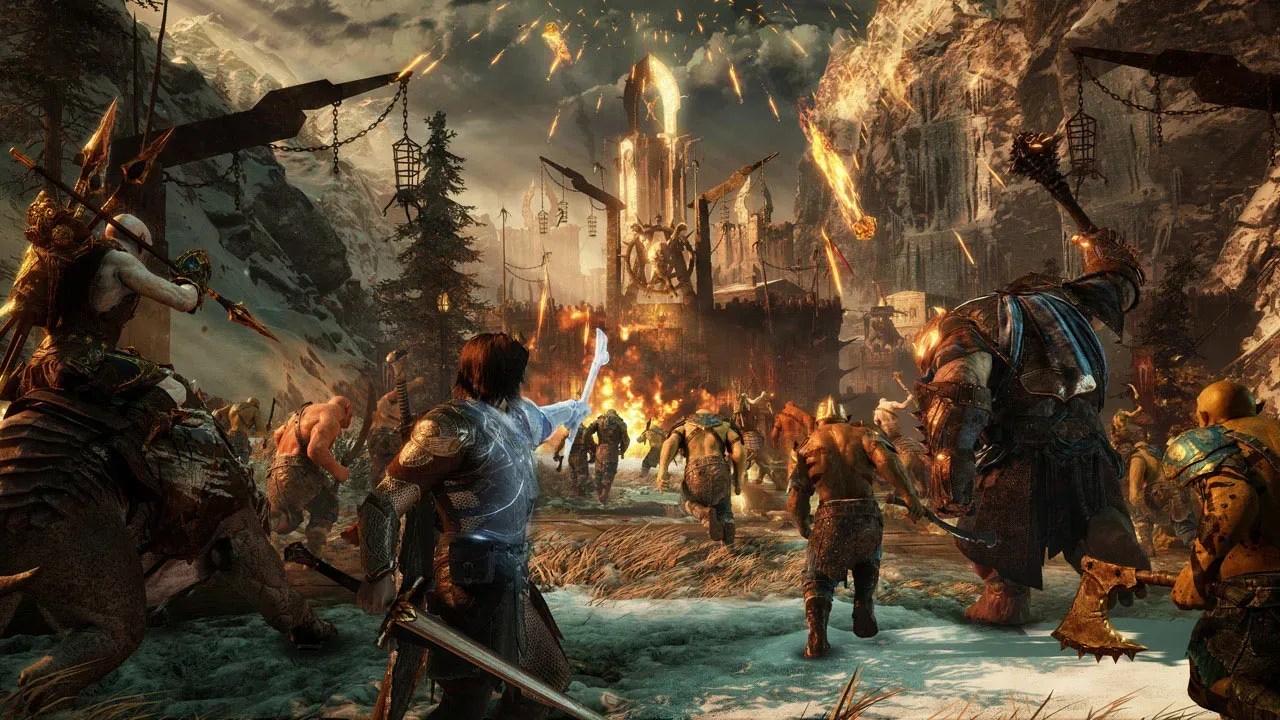
Blacked-out puzzle pieces
When you head out into the first region, the hierarchy of Uruks in the game is first hidden in shadow. While you can play a game of Who’s That Pokemon?with it, the silhouettes merely exist to prod you along an exploration course. Your map will be filled with their gnarly faces and their weaponry soon enough, but what’s more interesting are the relationships they share with other pieces on the board. It’s almost like a match of Minesweeper, a world opening up to you slowly, then all at once.
You can use this knowledge to your advantage, either to set up an ambush or to cut the head of the snake.
A voyage of discovery
Encountering Uruks in Shadow of War’s massive sandboxes is an event that’ll happen more often than you think. The desolate swamps and lush jungles are infested with their ilk. And in the event that one of the weaker scum gets your throat, they’ll be promoted to a captain, giving them some sweet loot and a spot on the Uruk chessboard. Other opportunities in the world present themselves to you by means of randomized interrogation or investigation events. Frisking a lowly Uruk for information uncovers more of the puzzle pieces.
Knowing an Uruk’s strengths and weaknesses could mean the difference between an assassin and an annoyance.
Understanding fully well that death is the single most frustrating part of a game, giving failure a face and a jagged smile makes for a whirlwind of an emotional relationship. The very personification of your mistakes taunts you and even learns from its mistakes, becoming immune to abilities if you spam them on a single foe.
The best part? It could be anyone. Any Uruk minding his business could be promoted to nightmare fuel.
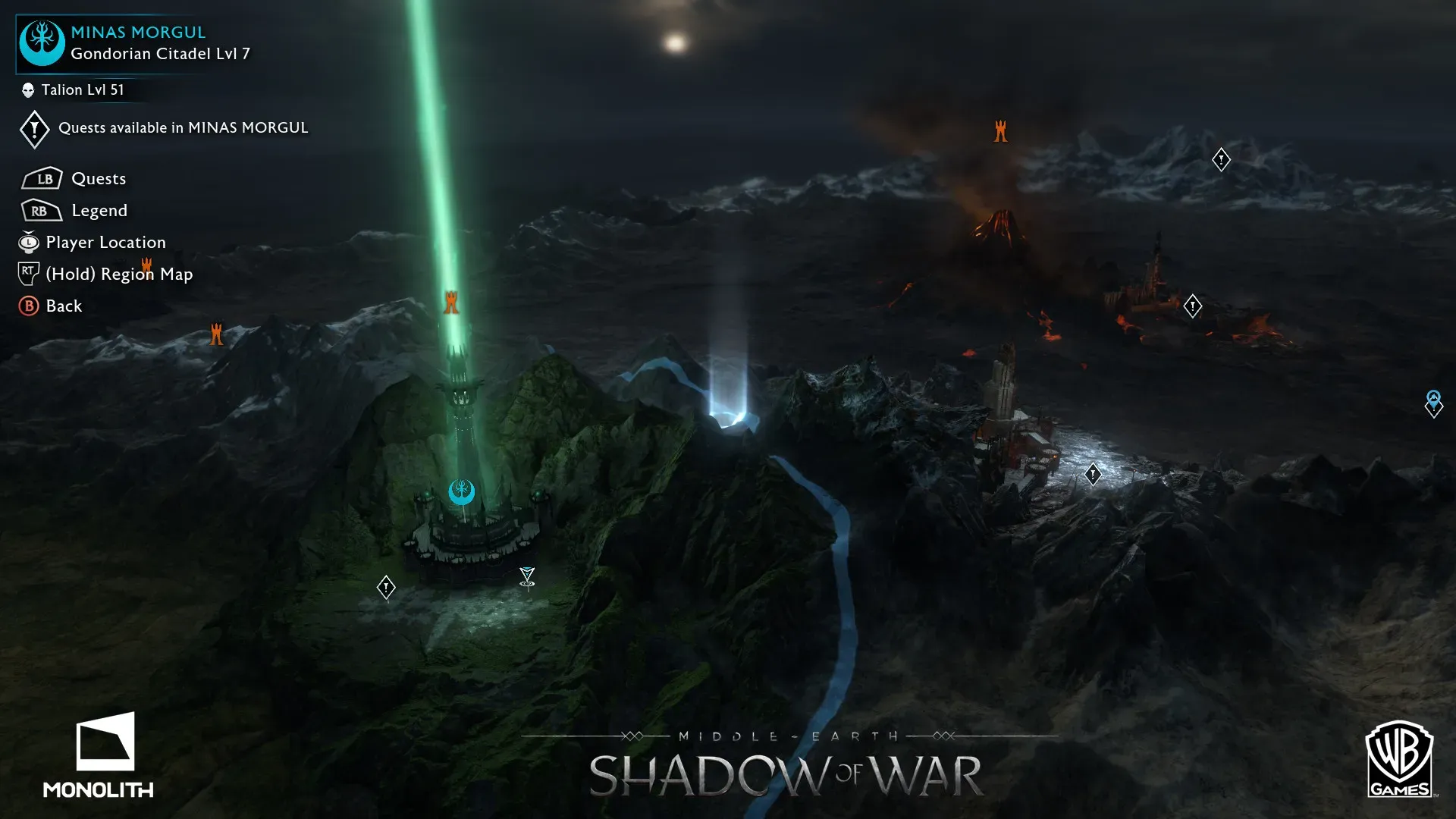
Play dress-up with your neighborhood Uruks
Every Uruk you come across in Shadow of War has been procedurally generated in-game. What this means is that everything from an Uruk’s attire to his strengths and quirks is picked from a pool of assets at random. The combinations this entails are remarkable enough to seem like entirely cohesive characters themselves, replete with unique personas.
While the endgame of its predecessor began to tear at the seams, Shadow of War doubles down on what sets the Uruks apart from each other. Voices, tribes, and a healthy second serving of fresh traits and abilities make for an enticing entourage of distinct Uruk war chiefs.
V for vendetta
As the rain strikes on the broken cobblestones, I leap from ledge to ledge in silence. None of the Uruks have spotted me and the war chief I’m hunting shouldn’t be too hard to pin down. Just as I close in on his bodyguard, I spot a familiar face. Didn’t I kill him already? His charred skin is the only reminder of the history we shared. I notch an arrow, thinking that cutting my old friend down would make things easier. Unfortunately, Talion isn’t the only character who levels up in Shadow of War.
The Uruk grabs the arrow mid-flight, only to turn towards me as though he held a mosquito.
His grin glistens like rain on stone. It turns out that my old friend was now impervious to ranged attacks, a trick the meaty warrior must have learned when he was supposed to be dead. Uruk grunts chant the war chief’s name as he joins his bodyguard’s side, ready to duke it out. Again, his conversation springs from one of three options: a general rebuke based on his class and tribe, a situational remark, or a retelling of the uneasy past you’ve shared with him.
A brush against a villain that would serve as a momentous set-piece in any other game is now a curated experience that is as common as rainfall in Shadow of War.
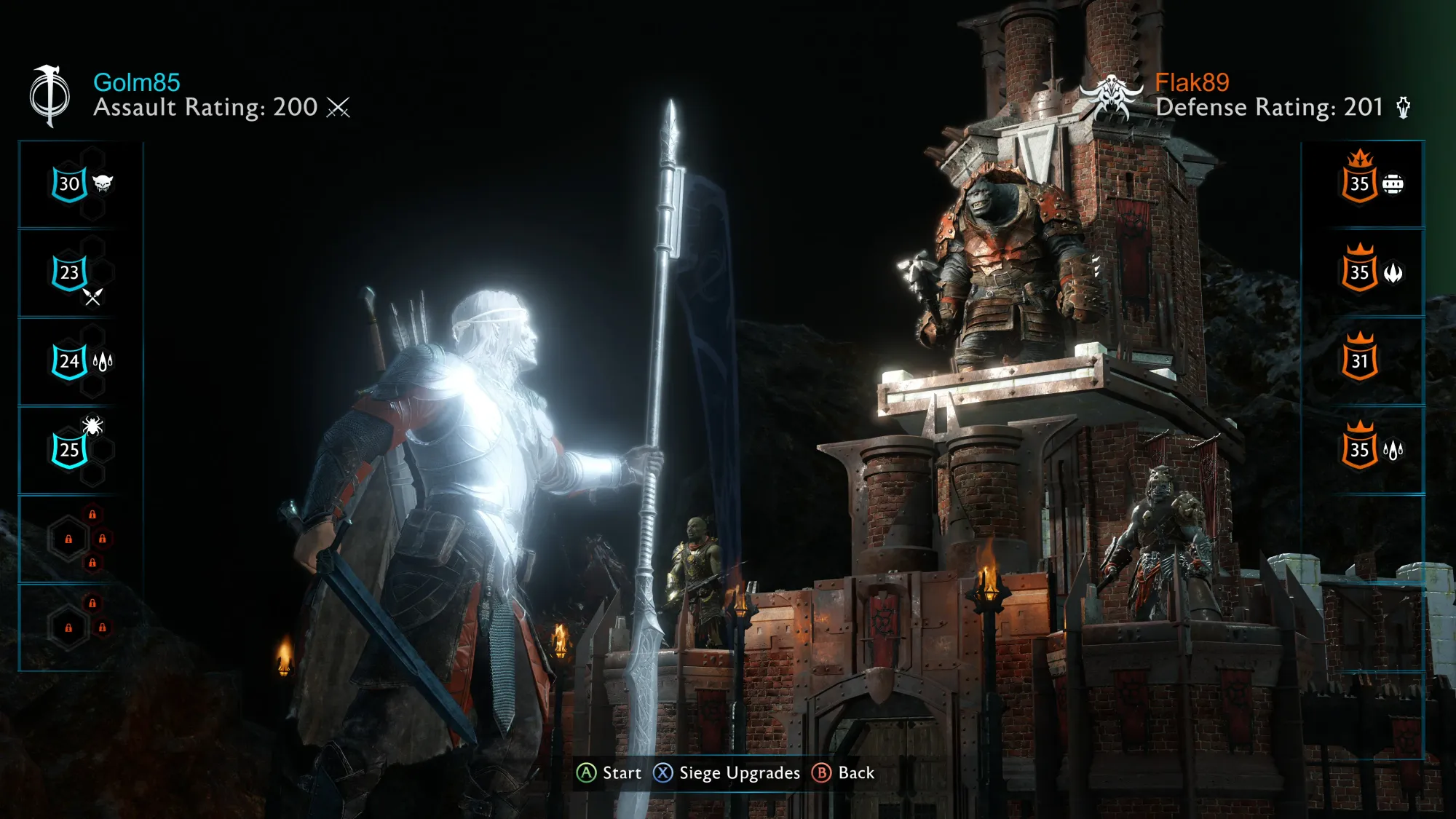
A world that progresses without you
Most open-world games revolve around the actions of your protagonist and come to a standstill if you aren’t actively engaged in a particular region. But that isn’t how the matter is handled in Shadow of War. Even death has consequences.
Don’t worry, you get to keep your loot.
Time doesn’t stand still when you’re killed in action. Uruks fight among themselves and vie for a higher rung on the ladder even as you whittle down your foes in another region. When you return, don’t be surprised you spot some new faces calling in the shots. These outcomes that arise without you raising a finger to serve as a ripe location for side-quests. But these quests matter more than the fetch-quests of old.
That’s because their actions have consequences. Just like yours do.
Chess pieces that (mostly) do your bidding
While using Uruks as mind-controlled slaves rings the wrong bells in the representation department, it serves as a brilliant vehicle for the player to personally have a stake in the world. A mechanic that is as rewarding as it is empowering, you can possess weakened Uruks, provided you’re at the right skill level. Allied Uruks level up just as you do by performing quests and dueling with fellow Uruks. They engage in combat off-screen, lobbing axes and tossing heads without waiting for your participation, keeping things chaotic and unpredictable. Enemies scale in such a way that ever-evolving Uruk captains are never reduced to one-hit cannon fodder. Fret not, the game lets you develop at a faster rate to reward your efforts.
This grounds you in the world and makes you invest in non-playable characters in ways hitherto thought impossible. You’ll be able to actively take part in their growth, be it via hunting raids or territorial clashes. But remember, betrayal is a common occurrence. And so is resurrection.
Uruks that weren’t put down right return with a vengeance.
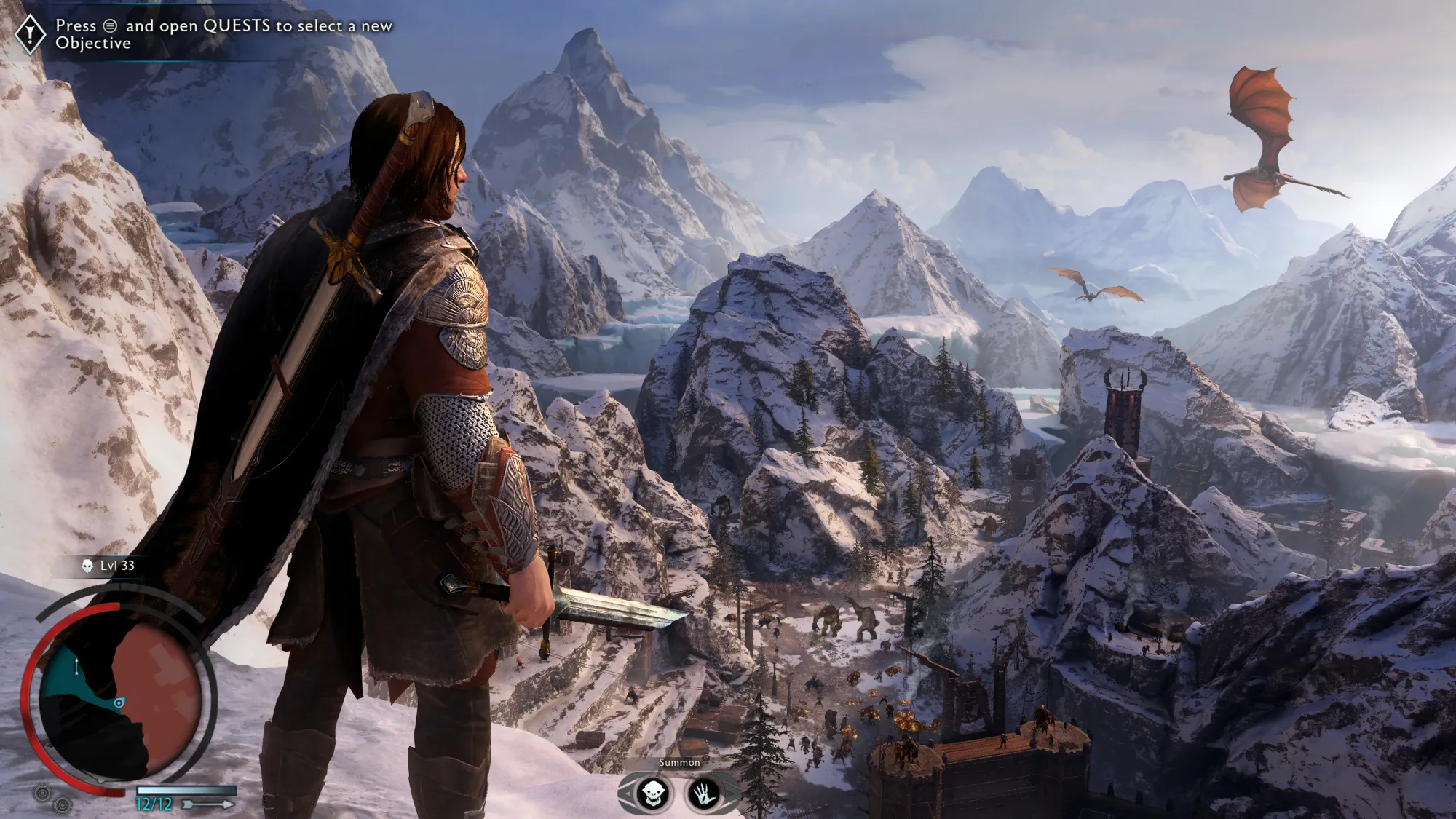
Create your set-pieces
Speaking of chess pieces that listen to you, friendly Uruks let you devise large-scale assaults on enemy fortresses to take down warlords. These conflicts are seamlessly connected to the story, letting narrative-driving characters join the hunt at no risk. These characters won’t get killed, which means that the open-ended nature of your Uruk expedition is kept safe from the overarching narrative and vice versa. This marks a significant departure from games that only let you bring run-of-the-mill troops devoid of a personality to a fight. They’re expendable.
But the Uruks you’ve raised like your children are far from disposable.
This means that you’ll pick your battles. Not only will your skills restrict you, so will the Uruks in your control inhibit your expansion plans. And the ever-shifting tide of war can tip to the other side in the event of betrayal or worse, assassination. Losing an Uruk becomes a tangible loss: it’s almost like you’ve lost a friend.
A powerful impetus to keep your troops alive.
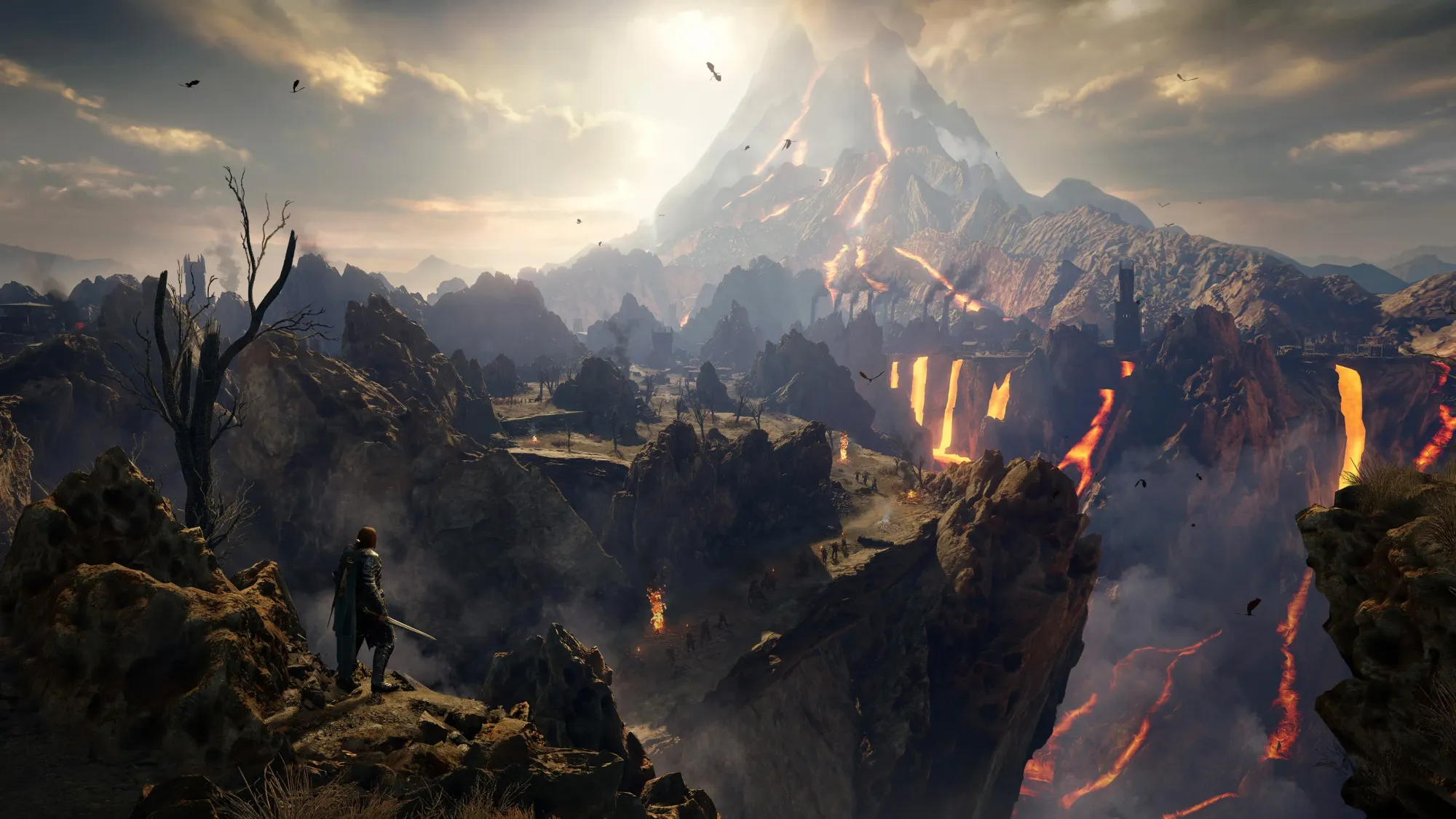
Everyone needs a nemesis
Shadow of War uses the same cause and effect system that games have delivered for decades. But its peers have only focused on the present. And on the effects rather than the causes themselves. What Monolith does differently is that they account for a larger reality, one crafted by miniature Uruk brushes instead of wide protagonist strokes. They’ve fashioned a template that no game has implemented in the past. Open worlds filled with exotic vistas and lush environments are ripe for this kind of experimentation. The Nemesis system fits like a glove onto countless established franchises.
Think of a ruthless bandit ecosystem in Far Cry or Fallout. A complex political hierarchy where grunts grow into targets worthy of assassination in an Assassin’s Creed or a Grand Theft Auto entry. Or a sci-fi kaleidoscope of alien species employing customized armies as they grapple for galactic domination à la Mass Effect.
Countless characters with their own stories and motivations. Intricate lore that is procedurally generated for the first time. Satisfying encounters with layers of intrigue and excitement that players can tell each other about. Bosses are no longer faceless entities with a mean streak. Even the weakest of foes are saved from their cardboard cutout fates. A true living and breathing world that responds to your touch. And thrives without it.
The possibilities are endless once more.
Comments
Sign in or become a SUPERJUMP member to join the conversation.
